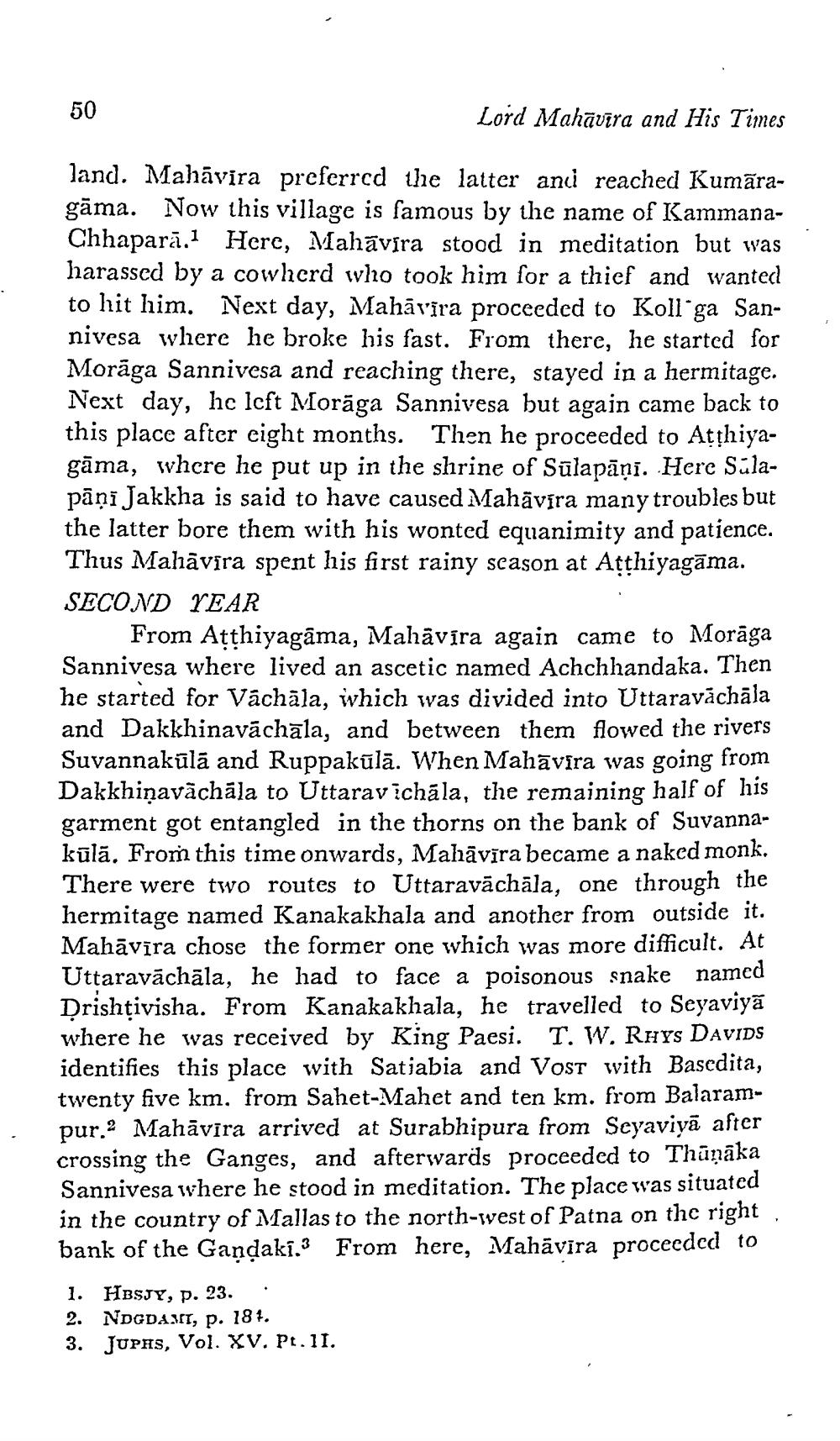________________
50
Lord Mahāvīra and His Times
land. Mahāvira preferred the latter and reached Kumāragāma. Now this village is famous by the name of KammanaChhaparā.1 Herc, Mahāvīra stood in meditation but was harassed by a cowherd who took him for a thief and wanted to hit him. Next day, Mahāvīra proceeded to Koll"ga Sannivesa where he broke his fast. From there, he started for Morāga Sannivesa and reaching there, stayed in a hermitage. Next day, he lcft Morāga Sannivesa hut again came back to this place after eight months. Then he proceeded to At;hiyagāma, where he put up in the shrine of Sūlapāņi. Here Sulapāņi Jakkha is said to have caused Mahāvīra many troubles but the latter bore them with his wonted equanimity and patience. Thus Mahāvīra spent his first rainy season at Atthiyagāma. SECOND YEAR
From Atthiyagama, Mahāvīra again came to Morāga Sannivesa where lived an ascetic named Achchhandaka. Then he started for Váchāla, which was divided into Uttaraváchāla and Dakkhinavāchāla, and between them flowed the rivers Suvannakülā and Ruppakūlā. When Mahāvīra was going from Dakkhiņavāchāla to Uttarav ichāla, the remaining half of his garment got entangled in the thorns on the bank of Suvannakūlā. From this time onwards, Mahāvīra became a naked monk. There were two routes to Uttaravāchāla, one through the hermitage named Kanakakhala and another from outside it. Mahāvīra chose the former one which was more difficult. At Uttaravāchāla, he had to face a poisonous snake named Drishțivisha. From Kanakakhala, he travelled to Seyaviyā where he was received by King Paesi. T. W. Rhys DAVIDS identifies this place with Satiabia and Vost with Bascdita, twenty five km. from Sahet-Mahet and ten km. from Balarampur.? Mahāvīra arrived at Surabhipura from Seyaviya after crossing the Ganges, and afterwards proceeded to Thūņāka Sannivesa where he stood in meditation. The place was situated in the country of Mallas to the north-west of Patna on the right, bank of the Gandaki. From here, Mahāvīra proceeded to 1. HBSJY, P. 23. . 2. NDGDAJT, p. 184. 3. JUPAS, Vol. XV. Pt.11.




